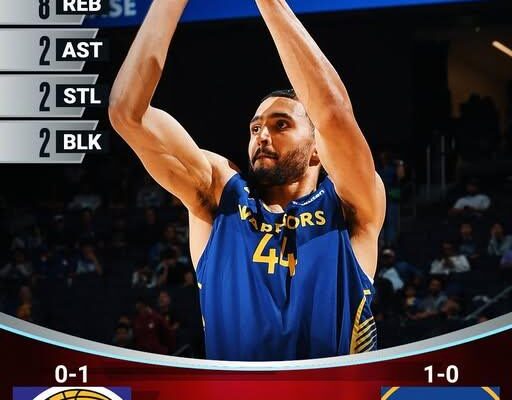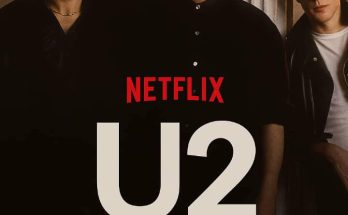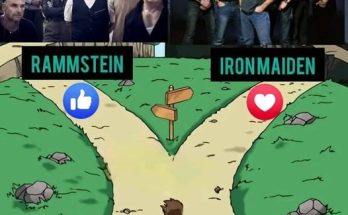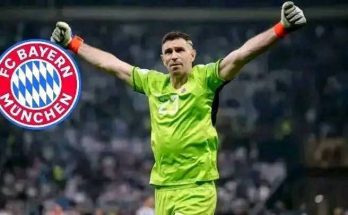The Golden State Warriors won the California Classic at home thanks to 13 points and eight rebounds from Jackson Rowe.
The Golden State Warriors captured the California Classic at home, riding a strong performance from Jackson Rowe, who contributed 13 points and eight rebounds to help lift the team to victory. The game, emblematic of early summer competition and player development, gave fans a taste of the potential future of the franchise and highlighted the significance of events like the California Classic in the broader NBA ecosystem. While not officially part of the regular season or even the playoffs, this tournament provides teams an invaluable opportunity to assess young talent, experiment with lineups, and reignite fan excitement during the offseason. For a team like the Warriors—steeped in championship history and now transitioning through roster evolution—this victory, though modest in scale, signals important developmental progress.
Jackson Rowe’s performance stood out not only because of his statistics but also because of the poise and confidence he exhibited on the court. His ability to control the glass, stretch the floor, and contribute defensively gave the Warriors a steady presence, particularly when the pace of the game threatened to become chaotic. At 6’7”, Rowe isn’t the flashiest player on the floor, but his efficient footwork, smart positioning, and court awareness make him a vital asset in these competitive but nurturing environments. Every year, the California Classic acts as a proving ground for players like Rowe, many of whom go undrafted or are signed to Exhibit 10 contracts, looking to turn heads and secure a spot in training camp or even a two-way contract.
The California Classic, hosted this year at Chase Center in San Francisco, marks one of the premier events leading into the Las Vegas Summer League. It features several California-based teams such as the Sacramento Kings, Los Angeles Lakers, and Los Angeles Clippers, providing a regional flair and added competitive spirit. The Warriors’ success this year felt particularly significant given the state of their current roster. With aging stars like Stephen Curry, Klay Thompson departing for Dallas, and Draymond Green facing both physical and strategic limitations, the Warriors are entering a new era. In this transitional moment, the franchise is hungry for the emergence of young, hungry talent who can carry the torch forward—players who might not carry the immediate star power of their predecessors but can still contribute meaningfully to the franchise’s future.
Beyond Rowe, the Warriors’ roster featured a mix of rookies, G-League call-ups, and international players looking to make their mark in the NBA. The California Classic serves as both a showcase and an audition. Coaches and executives keep a close eye on how these young players adapt to NBA-style pace, physicality, and spacing. For fans, it’s a glimpse into the future. For players, it’s a high-stakes job interview wrapped in an intense basketball competition.
What made this year’s performance stand out was not just individual skill sets, but the evident cohesion and discipline the Warriors’ summer squad displayed. The coaching staff clearly emphasized fundamentals, ball movement, and defensive integrity. Ball reversals, smart screens, and hard closeouts punctuated their play—signs of a system-oriented culture even at the developmental level. This approach mirrors the larger identity of the Warriors franchise, one defined over the past decade by precision, ball movement, and team-first basketball. Carrying that philosophy into summer league environments ensures continuity, helping the franchise identify players who can assimilate quickly into their schemes if called up during the regular season.
The Warriors’ developmental program, led by the Santa Cruz Warriors in the G-League, has historically been one of the more effective pipelines in the league. Notable contributors such as Jordan Poole and Gary Payton II sharpened their skills in the system before stepping into major roles during playoff runs. Jackson Rowe’s emergence in this tournament may signal that another gem is being polished within that system. His ability to play both forward spots, defend multiple positions, and knock down the occasional three-point shot makes him a candidate for a hybrid role in the Warriors’ rotation, especially if injuries or trades shake up the main roster during the season.
From a tactical standpoint, the Warriors’ summer squad executed a deliberate game plan. They worked through multiple offensive sets designed to give their primary ball handlers—like Brandin Podziemski and rookie guard Reece Beekman—opportunities to create while ensuring floor spacing for wing players and pick-and-pop opportunities for bigs like Rowe. Podziemski, a promising young guard entering his second season, continued to show improvement in decision-making, shot creation, and defensive communication. His development is essential as the Warriors look for a long-term solution in their backcourt with the eventual phasing out of Curry’s dominant minutes.
Defensively, the Warriors used a switch-heavy scheme that forced opponents into isolation matchups they weren’t always comfortable with. This aggressive switching—combined with quick recovery and communication—allowed the Warriors to close out on shooters, rotate effectively, and limit second-chance points. Rowe was integral in this scheme, often tasked with switching onto guards and holding his own against quicker players. His defensive versatility, especially in an era where positionless basketball reigns, makes him even more valuable.
Beyond the tactical elements, the cultural significance of this win cannot be overlooked. Summer league victories may not come with banners or parades, but they establish expectations and habits. For the younger players, learning to win—even in the offseason—builds chemistry and instills confidence. For a franchise like Golden State, which prides itself on high basketball IQ and selfless play, embedding these values at every level of the organization is critical. The California Classic provided the perfect environment for this teaching to happen organically.
The fans, too, played a significant role in the energy of the event. Chase Center, known for its boisterous crowds during regular-season games, was alive with enthusiasm even for summer league action. Young families, die-hard Warriors supporters, and casual observers all came together to cheer on the next generation of talent. This atmosphere reinforces the Warriors’ brand identity as a community-focused team that invests not only in championships but in legacy. The team’s connection with its fanbase is one of the strongest in the NBA, and events like the California Classic deepen that bond, giving fans a front-row seat to the early chapters of players’ careers.
Media and scouts in attendance also took note of Rowe’s performance, adding further credibility to his prospects. Though it’s too early to project a full NBA career based solely on summer league play, players who consistently perform at a high level in these tournaments often earn opportunities to extend their audition into training camp and beyond. Rowe’s two-way potential—impact on both ends of the floor, adaptability to different lineups, and coachable demeanor—makes him a compelling candidate for further investment by the Warriors or another team willing to develop him.
Other standouts in the tournament, such as Lester Quinones and Gui Santos, also contributed meaningfully, showing that the Warriors’ scouting department continues to unearth talent across various channels. Whether through the draft, international signings, or undrafted free agency, the team remains committed to building depth and flexibility. In today’s NBA, where injuries, load management, and cap constraints necessitate deep rotations, the importance of a strong player development program cannot be overstated.
As the team shifts focus toward the upcoming Las Vegas Summer League, the confidence gained from winning the California Classic will carry over. Players will have a clearer understanding of their roles, the pace of NBA-level play, and the expectations of the coaching staff. Coaches, in turn, can refine their rotations, assess player chemistry, and experiment with more advanced sets. For Jackson Rowe, the next phase will be about sustaining momentum—showing consistency, continuing to refine his shooting mechanics, and staying aggressive on the boards.
Winning the California Classic isn’t just about lifting a trophy—it’s about affirming a process. The Warriors’ organization has long championed a philosophy that blends analytics with feel, talent with culture, and short-term competitiveness with long-term sustainability. In this light, every summer league win is a small but meaningful checkpoint. For young players like Rowe, it’s a sign that they belong. For coaches and executives, it’s validation of scouting decisions and developmental strategies. And for fans, it’s a reminder that even as the dynastic era begins to fade, the next generation is ready to step up and create its own legacy.
In a basketball landscape where change is constant and every edge counts, these seemingly minor victories matter. They build confidence, foster identity, and create opportunity. For the Warriors, winning the California Classic at home—on their own court, in front of their own fans—was more than just a morale booster. It was a declaration: the system works, the pipeline is flowing, and the culture remains intact. And for Jackson Rowe, it was a night to remember, a step forward, and perhaps the beginning of something much bigger.



